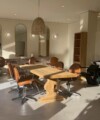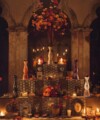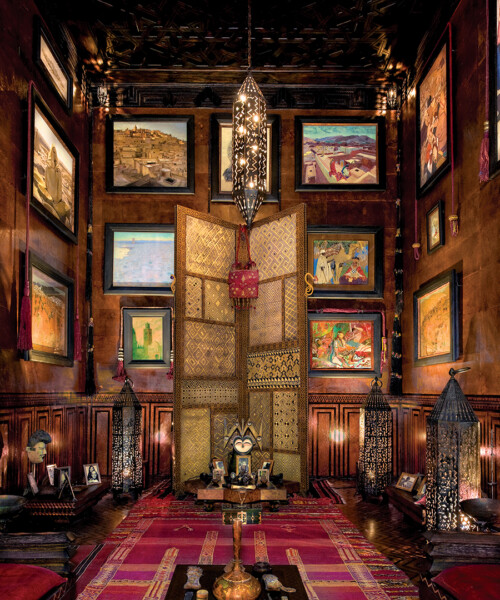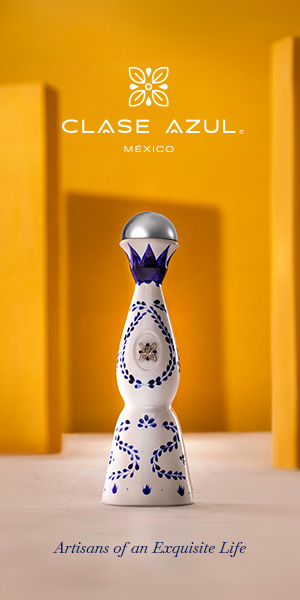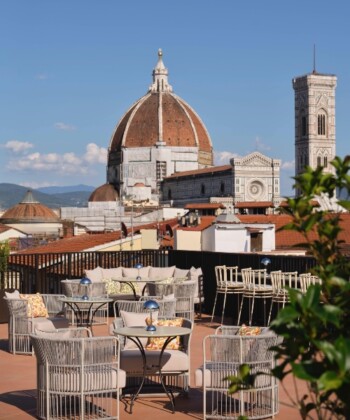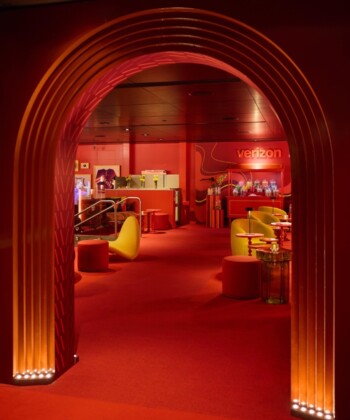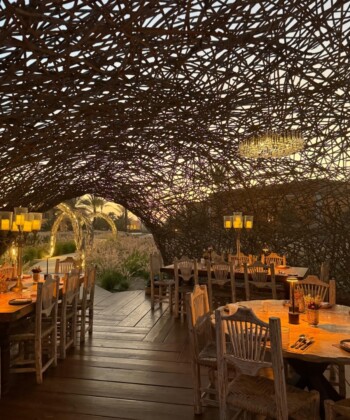At its heart, Marrakesh is a city of design. Beyond the Barbary apes and snake charmers on the main square of the medina and the frantic bartering in the narrow, labyrinthine alleys of the souk, the Ochre City has perhaps the world’s greatest collection of classical Islamic architecture, encompassing exquisite courtyard gardens full of fragrant flowers, shade trees and murmuring fountains. The absolute highest expression of this ideal is the Serge Lutens Foundation, built over the last 50 years by the visionary French perfumer and aesthete. The edifice, cobbled together from 60 separate riads, covers two and a half acres and houses Lutens’s unparalleled collection of art, artifacts and hand-wrought craftsmanship. The only problem? This 33,000-square-foot monument isn’t open to the general public, and the only people allowed to visit are guests of the Royal Mansour—the five-star hotel built and owned by King Mohammed VI.
It may seem counterintuitive (and a bit elitist) to build what amounts to a museum and then bar people from seeing it, but all you need to do is visit the Majorelle Garden, one of the city’s most popular tourist attractions, to understand Lutens’s reasoning. Saved from demolition in the 1970s and lovingly restored by Pierre Bergé and Yves Saint Laurent (whose museum is next door), the Majorelle Garden is a pilgrimage for design lovers—and their legions are a problem. Originally the home and studio of French painter Jacques Majorelle, the rare botanical garden is punctuated by buildings painted in his namesake shade of blue, and it attracts hordes of selfie stick–wielding influencer wannabes who crowd and jostle each other in what was intended to be a serene space. By the same token, the line for a momentary glimpse at the intricately carved and ornamented Saadian Tombs (an ancient royal necropolis) often exceeds an hour’s wait, and the tour groups traipsing through the Bahia or El Badi palaces take some of the magic away from the magnificent interiors.
Which is precisely why Lutens has so severely restricted access to his masterpiece. The guiding principle of Moroccan architecture and garden design is to create quiet, contemplative spaces where the only sounds are murmuring water or music, and the only scent the heady aroma of a tropical blossom. The low-lit rooms are meant to offer respite from the harsh light and heat of the city, a calm space in which to retreat from the frenetic streets. Unique among the sites of Marrakesh, the Serge Lutens House offers this experience.
Guests of the Royal Mansour are transported via vintage sidecar to an unassuming front door. Inside, they’re greeted with the traditional Moroccan welcome of milk and dates and then conducted, at a monastic pace, through a maze of elaborate rooms and courtyards. The spaces are hushed, and so deeply sensory that the experience takes on a spiritual quality. No cameras are allowed, not for the cheesy reason of selling postcards in the gift shop (there is none), but to ensure that visitors fully immerse themselves in the present and their immediate surroundings. The symmetry of the rooms, with Moorish arches radiating and dizzyingly ornate geometric designs on the hand-carved ceilings, recall an M.C. Escher print, while the custom light fixtures and furniture designed by Lutens himself have to be seen to be believed. African art and artifacts, collected from all over the continent, are deployed inventively, like the Jewish Berber wedding belts that serve as wall coverings or the artful tabletop compositions of priceless antiquities. The floors are smothered in the finest carpets, and the walls covered with masks and masterworks by the likes of Majorelle, Edy Legrand and Paul Jouve. It’s an aesthete’s dream, culminating in tea and pastries in a quiet corner and a visit to Lutens’ perfume museum.
So extraordinary is the experience that leaving feels like being evicted from paradise, but returning to the Royal Mansour isn’t
exactly a hardship. Set amid lush gardens dotted with orange trees, the hotel is another dazzling example of Moroccan design and offers sufficient reasons to stay there on its own. The exclusive access to the Serge Lutens Foundation, however, makes it mandatory.




